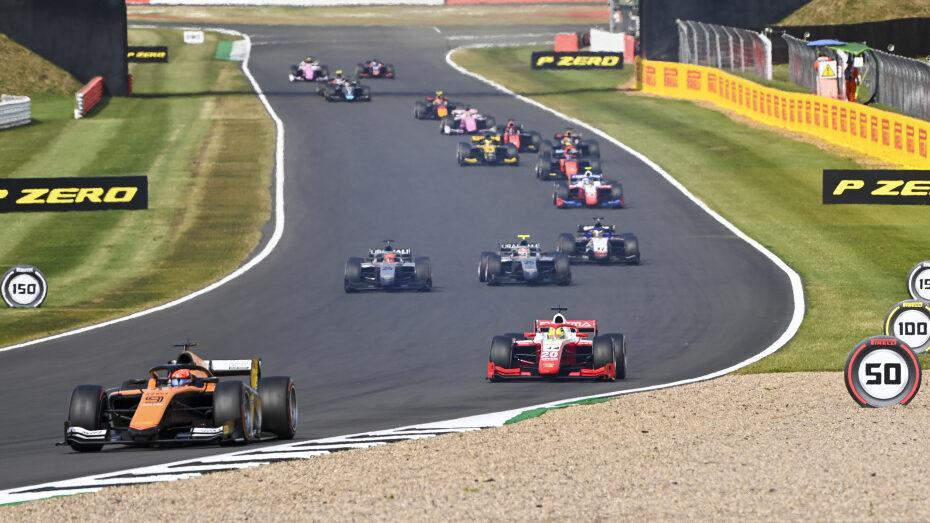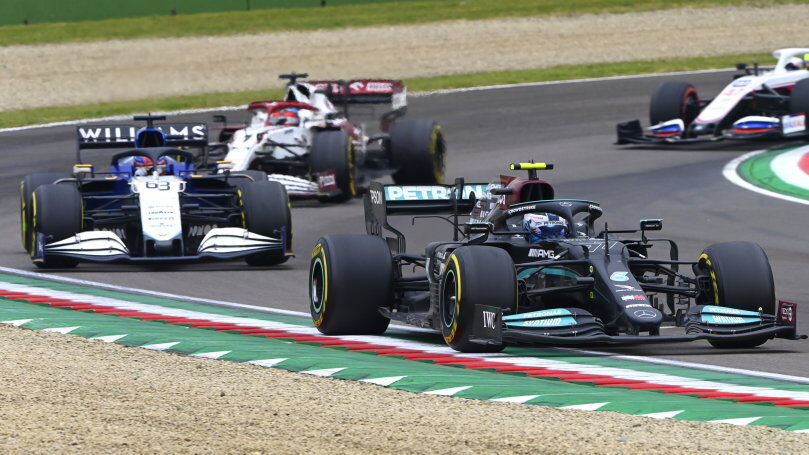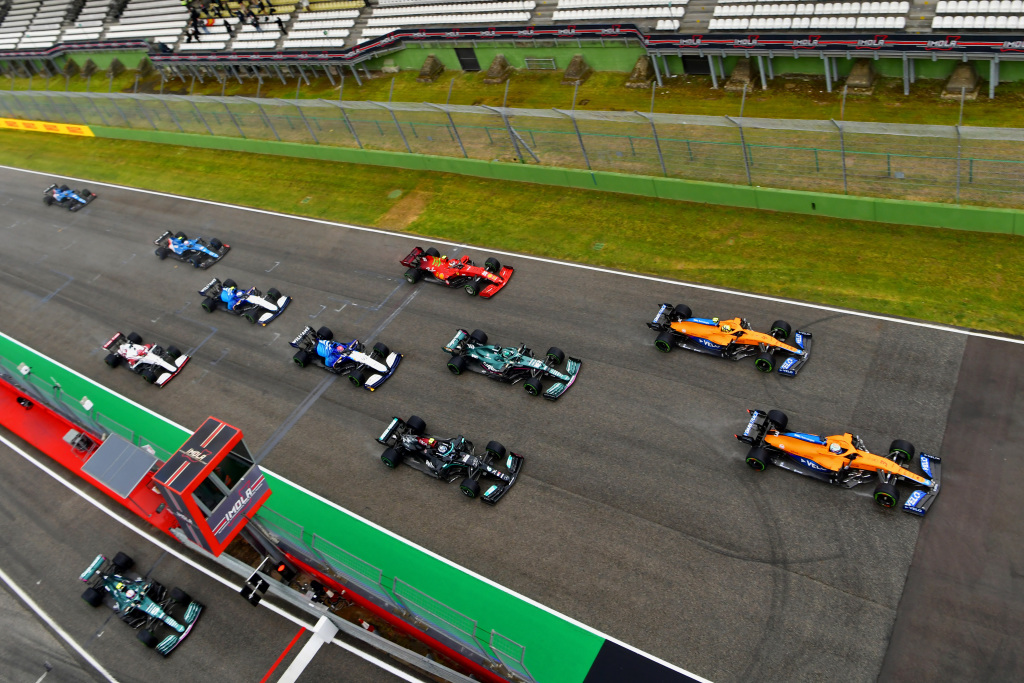Formula 1 has announced it’ll be trialling a new qualifying format in 2021. ‘Sprint races’ are set to replace Saturday’s qualifying session and set the grid for Sunday’s race. While qualifying will now be moved to Friday, to set the grid for Saturday’s sprint race. With us?
It fundamentally mixes up the Grand Prix weekend. We lose a practice session in favour of a race, and that can only be a positive move, can’t it?
Well, yes and no. Some fans are up for it. Having seen their success in F2 and F3 in the past, where the sprint races often supply the best action, it could be a fine addition to the F1 weekend.
But others are not so keen: “if it ain’t broke, don’t fix it”. The 2020 season was one of the most exciting in recent memory, and if the early races of 2021 are anything to go by, we’re in for a stellar season this year too. So why break the status quo?
With the format set to be trialled at the British and Italian Grands Prix, plus another race to be confirmed, let’s take a look at the big arguments for and against their introduction.
The case for sprint races
More racing across the weekend
Grand Prix racing always has and always will be about just that: racing. Not just pitting the machines against each other, but testing the drivers’ skill in combat. Qualifying in its current format tests the drivers on a single lap, and that’s great. But you can have all the pace across one lap, and it means squat if you can’t convert it during a race.
The sprint qualifying format will effectively extend the race distance by 100km. When the chequered flag comes out on Saturday, the race will effectively be paused, and pick up again from the Grand Prix on Sunday. For fans attending the whole weekend, that means more action for your buck. While Fridays practice sessions have a unique atmosphere and great for die-hards to inspect the cars, they provide little in the way of competitive action. With sprint races, there will be a competitive race every day of the weekend, making it more worth your while to attend every day.
It also means more pressure on the drivers, but also more opportunity for redemption. A driver now has to nail qualifying and a race before the Grand Prix on Sunday. But equally, should a driver misstep – for instance, failing to qualify where they’d expect to on Friday – they have an opportunity to right that wrong in the Sprint Race.
F2 has paved the way successfully
Racing fans who follow the junior series will already be familiar with the sprint race format. Until the 2021 season, the support series held its qualifying on Friday, a longer feature race on Saturday, and then a sprint race on Sunday ahead of F1’s Grand Prix.
There are some subtle differences, however. Much of the drama came from the fact the grid from the sprint race was dependant on the result of the feature, with the top eight finishers being reversed for the sprint race grid.
That won’t be happening in F1. Reversing grids was discussed, but ultimately, a gimmick too far for the teams to agree to. But that doesn’t mean there won’t be plenty to race for in F1’s qualifying races.

Copyright: Motorsport Images
While drivers like George Russell has garnered a reputation as ‘Mr Saturday’, having never lost a qualifying battle with a teammate, he’ll have to get his elbows out to ensure he puts his Williams as high up the grid as possible. This could benefit drivers who are better in racing conflicts, like Lando Norris or Sergio Perez. That could create grids that are a truer reflection of the grid’s racing abilities.
Sprint races could open the door for more varied qualifying
F1 hasn’t always had great success with new qualifying formats. The timed elimination idea, where a driver was booted out every 90 seconds, was an absolute disaster. It ended with barely any action on track, and the drivers weighed and in their motorhomes before the chequered flag was waved. It did not last long.
And the current shootout format is tried and tested. There’s plenty of action, the fastest drivers come out on top, and it has the ability to produce exciting grids for the race.
So why change it? Well, why not?
If it’s a success, then organisers could have more than one format to choose from for future events. Ross Brawn has already stated he doesn’t expect every Grand Prix will utilise Sprint Qualifying if it proves popular, but mixing it up week-on-week could keep the weekend’s feeling fresh. And what’s to say there aren’t more formats to be tested and thrown into the mix?
The arguments against sprint races
A sprint race will take away from the sanctity of the Grand Prix
When Lance Stroll took his first pole position in Turkey in 2020, his joy was palpable. When Sergio Perez took his victory in Bahrain, he wept and made sure his son was watching.
But if a driver takes his first pole on a Friday, and gets pole for the sprint race, it’s only half a job done. They’ll then have 100km to keep the rest of the grid behind to secure the top spot for Sunday’s race.
And should they pull it off, how will they feel when they take the sprint race chequer? Sure, they’ll have three points to their name, but it will have a fraction of the meaning of taking a win at the Grand Prix.
What we’re bound to see is pole position and taking a race win meaning less to the drivers. While we get more action, it might end up being less exciting for the drivers and fans.
The cash-strapped teams will be disadvantaged
Motorsport is an expensive business. One of the most commonly replaced parts on an F1 car – the nose cone – costs up to $300,000 each. That’s a lot to spend on lap 1 damage. And with an extra 100km to go wheel-to-wheel, the odds of picking up significant damage has risen.
The budget cap will help this, and it has been agreed that the cap will be extended by $200,000 to cover any additional damages. But for a big hit – think Bottas and Russell’s crash in Imola – that will hardly scratch the surface. It’s estimated that both cars racked up £1million worth of repairs and new parts. Clearly, a team like Williams will feel that hit more than Mercedes.

Image copyright: Motorsport Images
But before the budget cap starts properly in 2022, the teams with the lesser finances could be the ones paying the price for trialling sprint qualifying.
It will just act as a pause to proceedings
A Grand Prix must be run over a distance of 300km on Sunday. The new sprint race will be held over one-third of that at 100km. So, there is an argument that the sprint race doesn’t actually change anything.
It will extend the race to 400km, and simply throw in a day-long pause between the first 100km and the remaining 300km. As the cars will pick up from where they left off on Saturday, it isn’t actually bringing anything new to the table.
That might not be a problem. More racing action is a positive for fans, and the first 100km will have a different strategy as pit stops are not mandatory.
But with less at stake, will it actually devalue a Saturday’s worth of racing?
Ultimately, whichever side of the fence you’re on right now doesn’t really matter. Formula 1 is trialling the races with no obligation to using them full-time. And that in itself is positive; seeing the sport try new things will push it forwards and spark innovation.
So, let’s give it a go, reserve judgement until we’ve seen it in action, and then make up our minds.
Check out Autosport’s article on sprint race qualifying and the consequences on weekend strategy.
